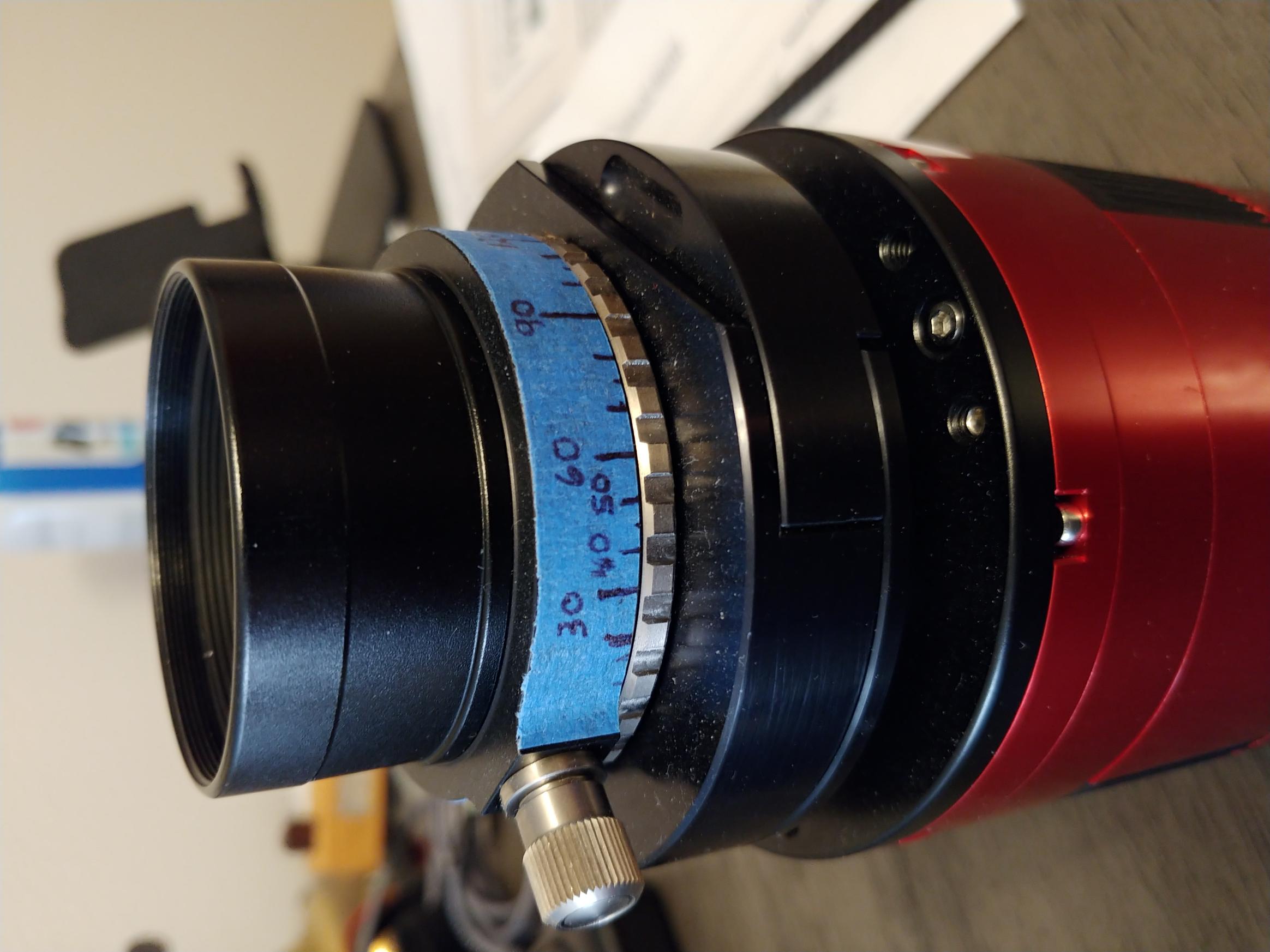Dave B:
I had a threaded connection on my baader steeltrack that connected to Baader cc via m48 but it pushed the focus tube into the ota so I took it off .
Dave
*
Interesting. Did it thread in at the bottom of the focus tube? Like a connector that threads onto the bottom of the focuser and then the CC screws into that?
*I cannot speak for Dave B, but since you asked the questions basically:, is it possible?, possible for a 2" focuser?, where do these things thread?, etc., I thought that I would post my setup for you. I should add, it was always my intent to have a non-clamped, fully threaded image train. I did use it with the clamp assembly that came with the focuser, but only to learn the specs of the image train and get familiar with the components. Threading generally provides a "square" setup, and even if not, things like tilt, sensor to CC distance, focal position, etc., become more repeatable upon assembly and disassembly. Also, regarding your question regarding adaptors. Baader has about the most comprehensive set of adaptors for telescopes that can be imagined. You need not use Baader focusers, or other gear to make use of these adaptors.
Here is my focuser with the clamp attachment removed to reveal the threading and adaptor. It is a Baader Steeltrack II. The adaptor is a dovetail with the proper threading to fit my CC. Also a Baader. Note that this recovers a number of precious mm of backfocus over that of the Steeltrack clamp connection.

I mention backfocus, because that may likely be a limitation of how you do things. Your question to
@Dave B would be answered as a definite "no" with my setup. I do not know the backfocus allowances for your CCs, but mine a fairly low and would never reach a flat field focus if I was to put the CC on the inside of the focus tube. Nevermind the issue with the CC extending into the image cone. If you cannot do it with the CC outside the tube, or as part of the tube within the normal part of the drawtube, then you probably have a rig that is not correctly designed for imaging (meaning not enough back focus included), or your choice of CC is limiting to your setup. I also would not ignore
@Arun H 's comments as well. For me, I evaluated my setup with the clamps provided with the focuser and learned what I wanted and the backfocus I had prior to designing and acquiring the CC and other features I have in my image train. I also built with the future in mind. Below is the image of the current simple setup, at correct backfocus distances, correct CC spacing to sensor, etc:

Note, the CC is the first item you see at the top of the image. It is threaded female to accept the male threading that you see in the first image. It adds only 0.5mm or less to the image train. Below the CC is a Baader heavy duty quick release that I use as an economial field rotator. Then comes a filter slider. What cannot be seen is the adaptor (5 or 7 mm, I can't remember) and also some fine aluminum spacers used between the filter slider and the camera body to adjust the spacing between CC and camera sensor. This got me to the correct setup, though I may still need to adjust, since this was the first go with this specific spacing. Earlier work has pointed me to these distances and I am probably very close to perfect. But I will never know if I don't get the rig out and image! Months of clouds, rain and snow!
I know that this setup is future proofed, at least for this camera. I already know that I can swap out the filter slider and replace with a filter wheel if I choose to do that. I have the space. This setup comes to focus with a reasonable amount of extra distance to not interfere with autofocus. I also expect that if I choose, I might be able to use an off-axis guider. But that is not something I want to do in the near future.
I hope this helps. If you find that your current problems or putative setups always interfere with the backfocus of your telescope, you might want to consider remounting your primary in such a way as to move the primary forward and add the needed mm of backfocus. The alternative is to redrill for your focuser.
Best,
Alan

